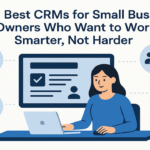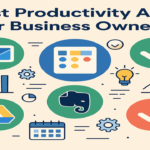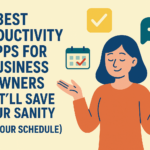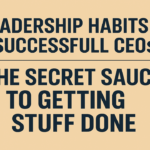Demystifying YouTube monetization: Your guide to earning through views” – Ever wondered how YouTube creators turn their passion into profits? We’ve got the answers. In this article, we dive deep exploring how many views you need to start making money on YouTube.
Earning money through YouTube monetization is akin to having a special opportunity to generate income from your passion for video creation. However, it’s not solely about financial gain; it’s also a way of recognizing your unwavering commitment and the extensive effort you invest in your channel. It’s like a friendly nod that says, “You’re doing an exceptional job!”
But here’s the deal – it’s not just about the money. It’s about keeping it real. Your viewers are your peeps, your fans, your squad. They trust you to bring them awesome content. So, while monetization is super exciting, don’t let it mess with your integrity. Be true to yourself and your audience. That’s the YouTube way.
The truth about making money on YouTube
You’ve seen those YouTube success stories where people seem to go from zero to hero overnight. But real talk, that’s not the whole story. Getting rich on YouTube ain’t a guarantee.
It’s important to set your expectations straight from the get-go. Making money on YouTube takes more than just luck. It’s a grind. A hustle. So don’t quit your day job just yet. Understand that the journey might take time and effort. But guess what? We’re here to guide you through it all.
YouTube monetization basics: How to start making money on YouTube
Alright, it’s time to decode the YouTube monetization game. But first, what in the world is it?
- What is YouTube monetization?
- Types of monetization options
- Eligibility requirements for monetization
What is YouTube monetization?
Imagine this: you create amazing videos and upload them to your YouTube channel. Now, you’ve got an audience – people who love what you do. YouTube monetization is the fancy term for making money from your videos. It’s like a high-five from YouTube, saying, “Great job, here’s some cash!
Types of monetization options
Now, let’s get into the juicy stuff – the different ways you can make those YouTube dollars. There’s more than one path to the treasure chest, so here’s the lowdown on each option:
Ad revenue: This is like the bread and butter of YouTube monetization. Do you know those ads that pop up before or during videos? Every time someone watches them on your channel, you get paid. It’s all about racking up those views so your ad revenue grows.
Channel memberships: Think of this like an exclusive club for your most dedicated fans. You can offer special perks, like behind-the-scenes content or custom emojis, and fans pay a monthly fee to join. It’s like building a community within your channel, and you earn some extra dough in the process.
Super chat and super stickers: Have you ever seen those colorful messages that stand out during live streams? That’s Super Chat and Super Stickers in action. Viewers can pay to have their messages highlighted, and you get a piece of that action. It’s like they’re saying, “Hey, I really dig your content, and here’s some love.”
Merchandise shelf: Got your own merch? Well, here’s where you can show it off. YouTube lets you display your cool t-shirts, mugs, or whatever else you’re selling right under your videos. When viewers click and buy, you pocket some extra cash.
Remember, the key to making the most of these options is to keep creating engaging content that keeps your audience coming back for more. The more views and engagement you get, the more you can make from these monetization methods.
So there you have it, the four amigos of YouTube monetization. Whether it’s ad revenue, channel memberships, Super Chat, or the merchandise shelf, each has its own charm, and you can mix and match to build your YouTube empire. Time to cash in on your creativity!
Eligibility requirements for monetization
Okay, so you’re pumped up to start making some money on YouTube, but there’s a catch – you gotta meet certain requirements first. Here’s the lowdown:
1,000 subscribers: To even think about monetizing, you need a minimum of 1,000 subscribers. That’s like having a small army of loyal fans who can’t wait to see your next video.
4,000 watch hours: It’s not just about subscribers; you also need people to watch your content. You must have at least 4,000 hours of watch time on your channel within the last 12 months. That’s like 166 days of people binge-watching your stuff!
Follow YouTube’s guidelines: Your content should play by the rules. That means no shady stuff – your videos should be
advertiser-friendly and not break YouTube’s community guidelines. Keep it clean and respectful.
Location matters: Monetization isn’t available everywhere. You need to be in a country or region where YouTube’s Partner Program is active. Check YouTube’s list to see if you’re eligible.
Verify your channel: Don’t forget to verify your channel with a phone number. It’s an extra layer of security that YouTube wants.
Google AdSense account: You’ll also need a Google AdSense account. It’s like the financial bridge between your YouTube earnings and your bank account. Set it up and link it to your channel.
Don’t rush into monetization if you’re just starting out. Build your audience, create awesome content, and once you hit those milestones, you’re good to go. It’s all about playing by the rules and showing YouTube you’re serious about this gig. Happy monetizing!
Factors that affect Youtube earnings
Let’s talk about what’s in your pocket when it comes to YouTube moolah, starting with a fancy term – CPM.
- CPM (Cost Per Mile)
- Viewer demographics
- Niche and content type
- Video length and engagement
- Geography and regional advertising rates
CPM (Cost Per Mille)
CPM might sound like alphabet soup, but it’s important. It stands for “Cost Per Mille,” and Mille means a thousand. So, CPM is how much advertisers pay for a thousand views of their ads on your videos.
Here’s the scoop: CPM rates can vary wildly. It’s like a rollercoaster, going up and down. Different factors play into this, like the type of ads shown and where your viewers are from. In general, the higher your CPM, the more you’ll earn from ad revenue. So, if you’re pulling in views from countries with higher ad rates, you’re in luck!
Viewer demographics
Now, let’s dig into another earnings influencer – viewer demographics.
Who’s watching your videos matters. Advertisers want to target specific groups, like age, gender, and interests. If your audience matches what advertisers are looking for, your earnings can go up.
But if your viewers don’t fit the bill, it might impact your moolah. So, creating content that attracts the right crowd can mean more cash in your pocket. It’s like serving pizza to pizza lovers – it’s a win-win!
Niche and content type
What you create and who you create it for matters. Some niches, like tech or finance, often have higher CPMs because advertisers pay more to reach those audiences. If your content is
family-friendly and suitable for most advertisers, you’re in luck. But if it’s edgy or controversial, well, you might earn less.
Video length and engagement
Longer videos can mean more ads and more ad revenue. But don’t just stretch it out for the sake of it. Make sure your content keeps viewers hooked. If they’re watching your video till the end and hitting that like button, YouTube notices. The more engagement you get, the more you can make.
Create content that’s interesting and keeps your audience glued to the screen. Long or short, it’s all about quality and engagement.
Geography and regional advertising rates
Where your viewers are from can affect your earnings. Ad rates vary by region. Some places pay more for ads, while others do not so much if you have a global audience. However, if most of your views come from areas with lower ad rates, you might make less. It’s like the ad market’s real estate – location, location, location.
No matter where your fans are, keep creating awesome content, and the views will follow.
How many views do you need to make money on YouTube?
Now, let’s get to the big question: how many views do you need on YouTube to start making money? Well, YouTube has a couple of key requirements you need to meet.
- The 4,000 watch hours and 1,000 subscribers rule
- Estimating potential earnings
- Case studies of successful YouTubers
- Realistic expectations based on niche and content
The 4,000 watch hours and 1,000 subscribers rule
To be part of the YouTube Partner Program and monetize your videos, you’ll need at least 1,000 subscribers. It’s like having a thousand people cheering you on. But that’s not all.
You also need a whopping 4,000 watch hours in the past 12 months. That’s like 166 days of people watching your content non-stop.
These criteria might appear challenging to meet, but they serve a specific purpose. YouTube aims to verify your commitment to your channel and the quality of your content before enabling monetization. It’s as if YouTube is telling you, “Demonstrate your value, and we’ll discuss revenue.
Before you start cashing in, focus on creating content that people love. Keep building your subscriber base; those watch hours will add up faster than you’d think. Meeting these milestones is your golden ticket to YouTube earnings!
Estimating potential earnings
Okay, you’ve met the 4,000 watch hours and 1,000 subscribers rule, and you’re ready to roll in the YouTube money. But how much can you actually make? Let’s break it down.
Your earnings depend on a few things, and they’re not set in stone. First up, there’s CPM (Cost Per Mille), which we talked about earlier. CPM can range from pennies to dollars, and it’s the cash you get for a thousand ad views on your videos.
Then, there’s the number of views you get. The more views, the more ad impressions, and potentially more money. But remember, it’s not just about views. Audience engagement matters, too. If folks watch your videos all the way through and engage with your content, that’s a green light for advertisers, which means more moolah for you.
Your niche also plays a role. Some niches have higher CPMs because advertisers pay more for certain audiences. If you’re in one of those niches, you could be in for a nice payday.
So, estimating your YouTube earnings is like predicting the weather – it can change, and there are many factors at play. But with dedication, quality content, and the right audience, you can turn your views into cash. Keep creating, keep engaging, and watch those earnings grow!
Case studies of successful YouTubers
Let’s dive into real-life stories from the YouTube trenches. We’ve got two types of channels to explore:
Low view but high CPM channels: Yep, it’s possible to make a pretty penny even with fewer views. Take, for example, a channel that’s all about super niche stuff like antique tea sets that may not be everyone’s cup of tea. However, advertisers who sell vintage items might pay top dollar to reach that audience.
So, if you’re in a niche with high CPM (Cost Per Mille), you can earn good money without millions of views. Quality over quantity, my friend.
High view but low CPM channels: Now, let’s talk about channels with tons of views but not swimming in cash. Say you run a gaming channel. It’s awesome, and gamers love it, but gaming ads don’t pay as much as, say, luxury watch ads. So, even though you’re pulling in millions of views, the lower CPM can mean your earnings aren’t as mind-blowing.
The lesson here is that views alone don’t tell the whole story. The type of content you create and the CPM for your niche matter. Some YouTubers are rolling in dough with fewer views because they’ve found the right niche, while others with massive audiences might not be cashing in as much if they’re in a lower CPM field.
When you’re aiming to make money on YouTube, consider both your view count and the CPM in your niche. It’s like a secret sauce for success. Remember, every channel is unique, and there’s no one-size-fits-all approach. The key is finding your sweet spot and creating content your viewers adore. That’s the real ticket to YouTube’s money-making success.
Realistic expectations based on niche and content
Okay, let’s get real about setting expectations. Making money on YouTube isn’t a one-size-fits-all deal. It depends on your niche and content type.
If you’re in a niche with a high CPM (like finance or health), you might start raking in the cash with fewer views. But if you’re in a niche with a lower CPM (like gaming or vlogs), seeing the same money will take more views.
Here’s the scoop: for niche channels, 1,000 views might not make you rich, but for others, it could mean a nice payday. The key is understanding what’s realistic for your specific niche and not comparing apples to oranges.
Remember, the journey to YouTube riches can be a slow burn. Building an audience and monetizing your channel takes time and dedication. If you’re in it solely for the money, it might not be the right motivation. Make videos because you love it, and the money will follow.
So, while no magic number of views guarantees a specific income, you can set your expectations based on your niche and the type of content you create. Stay passionate, keep creating, and you might just be the next YouTube sensation!
Strategies to increase monetized views on YouTube
So, you’ve got your channel, and you’re itching to boost those views and cash in on YouTube. Well, you’re in luck! We’ve got some pro strategies to help you maximize your monetized views.
- Optimize video titles, descriptions, and tags
- Promote videos on other platforms
- Build a loyal subscriber base
- Collaboration and cross-promotion
- Consistency and quality outline
Optimize video titles, descriptions, and tags
Let’s start with the basics. Your video’s title, description, and tags are like a roadmap for viewers and search engines. Craft catchy, keyword-rich titles that tell viewers what to expect. In the description, provide a brief summary of your video, and don’t forget to sprinkle in relevant keywords.
Think of tags as labels that help YouTube understand what your video is about. Properly optimizing these can improve your video’s discoverability, leading to more views.
Promote videos on other platforms
Don’t keep your awesome content confined to YouTube. Share it on your social media, website, or even email newsletters. When your content reaches a wider audience, it can attract more viewers to your channel. Sharing is caring, and it’s how you get your content in front of the right eyes.
Build a loyal subscriber base
Subscribers are like your fan club, and they can be your most loyal viewers. So, engage with your audience, reply to comments, and build a relationship. Encourage viewers to subscribe and ring that notification bell. The more subscribers you have, the more people who’ll see your new videos right away, boosting your early view counts.
Collaboration and cross-promotion
Teaming up with other YouTubers can be a game-changer. Collaborations introduce your content to their audience and vice versa. Cross-promotion can help both channels grow. So, reach out to fellow YouTubers in your niche or related areas for exciting collaborations.
Consistency and quality content
Consistency is key. Post videos on a regular schedule so your viewers know when to expect new content. Quality should never be compromised. Great content keeps viewers coming back for more. Make your videos engaging, informative, and entertaining. The longer people watch, the more ads they’ll see, and that means more revenue.
Remember, there’s no magic formula for success, and it won’t happen overnight. Building your viewer base and increasing monetized views takes time and effort. Keep honing your skills, stay connected with your audience, and keep the content coming. With dedication and smart strategies, you’ll be well on your way to increasing your monetized views and making that YouTube dream a reality.
Maximizing your YouTube earnings: Diversify, plan, and prosper
Ad revenue is just one piece of the monetization puzzle on YouTube. You can also make money through other channels like merchandise sales, channel memberships, affiliate marketing, and sponsored content.
- Diversifying income streams
- The importance of a business plan
Diversifying income streams
Okay, we’ve talked about ad revenue, but here’s the juicy part – diversifying your income streams.
Merchandise and merchandise shelf: If you’ve got some cool merch, like t-shirts, mugs, or whatever suits your niche, you can sell them to your viewers. YouTube even lets you showcase your merchandise under your videos using the merchandise shelf. When your fans buy your stuff, you earn some extra cash. It’s like a mini-online store right on your channel!
Channel memberships and super chat: Have you ever thought about starting an exclusive club within your channel? Well, with channel memberships, your most dedicated fans can join. They pay a monthly fee for special perks, like custom emojis and behind-the-scenes content. It’s a win-win – they get the VIP treatment, and you earn from their memberships.
And during live streams, there’s the Super Chat and Super Stickers. Viewers can pay to have their messages highlighted, making sure you see their love. Plus, they’re contributing to your earnings while they’re at it. It’s like a virtual high-five with a cash bonus.
So, don’t just rely on ad revenue. Diversify your income streams with merchandise, memberships, and live stream features. It’s a smart way to boost your earnings and reduce the rollercoaster ride of YouTube ad money. Keep your creative juices flowing and explore these options to maximize your YouTube monetization.
Affiliate marketing: Ever recommend a product you love to a friend? Well, affiliate marketing is kinda like that. You promote products or services in your videos, and when viewers click your special affiliate links and make a purchase, you earn a commission. It’s a win-win – you help your audience discover cool stuff and get a cut of the sales.
Sponsored content: Imagine getting paid to feature a brand or product in your videos. That’s what sponsored content is all about. Brands pay you to create videos that showcase their products. It’s important to keep it authentic, though. Only partner with brands that align with your content and your audience’s interests. Sponsored content can be a sweet addition to your income mix.
So, don’t limit your income to just ad revenue. Explore the world of affiliate marketing and sponsored content. These opportunities let you monetize your passion and creativity while also helping your viewers discover cool products and brands. It’s like turning your YouTube channel into a business venture with multiple income streams. Keep rocking that content!
The importance of a business plan
Let’s discuss having a business plan for your YouTube channel.
Think of your YouTube channel as a mini-business. Just like any business, it needs a plan. A business plan helps you set clear goals, understand your audience, and identify your income sources.
Setting clear goals: Your plan should outline what you want to achieve with your channel. Do you want to make a full-time income, promote your brand, or simply share your passion? Knowing your goals guides your content and monetization strategies.
Understanding your audience: Who’s watching your videos? Knowing your audience’s demographics, interests, and behaviors helps you tailor your content and monetization methods to what they want.
Identifying income sources: A good business plan maps out all the ways you can make money from your channel, not just ad revenue. This might include merchandise, affiliate marketing, sponsorships, or your own products and services.
Budgeting and expenses: Understanding the costs involved in running your channel is essential. This includes equipment, software, marketing, and even taxes.
Monitoring and adjusting: A business plan is not set in stone. You should regularly review and adjust it as your channel grows and market conditions change.
Having a business plan gives your channel direction and a roadmap for success. It keeps you focused and organized, helping you make informed decisions that can maximize your earnings and make your YouTube venture a profitable one. So, don’t just wing it; plan it!
Ensuring YouTube monetization success: Guidelines, copyright, and content management
Making money on YouTube is awesome, but it’s essential to protect your monetization by following YouTube’s guidelines and handling copyright and community guideline issues effectively.
- Advertiser-friendly content guidelines
- Handling copyright and community guideline issues
- Regularly reviewing and updating your content
Advertiser-friendly content guidelines
YouTube has a set of rules for content that can be monetized. Advertisers want their products shown in a brand-safe environment. To ensure your content is advertiser-friendly:
- Avoid excessive use of strong language, violence, or controversial topics.
- Steer clear of sensitive subjects like hate speech or discrimination.
- Keep your content family-friendly so it can be enjoyed by a broad audience.
Remember, monetization works best when you have a clean track record. Straying from these guidelines can lead to demonetization or even channel termination.
Handling copyright and community guideline issues
Copyright strikes and community guideline violations can hurt your monetization efforts. Here’s how to deal with them:
- Copyright Issues: Always use your content or make sure you have proper licensing. If you get a copyright claim, you might not lose your monetization immediately, but you’ll share earnings with the copyright owner. To protect your income, resolve copyright issues swiftly.
- Community Guideline Violations: These relate to content that breaches YouTube’s community standards, like spam, harassment, or graphic violence. Violations can lead to video removal or channel strikes. Stay informed about these guidelines and ensure your content complies.
Handling these issues effectively can prevent hiccups in your monetization journey.
Regularly reviewing and updating your content
As your channel grows, your old content may not always reflect your current standards. Regularly review your videos to:
- Remove any outdated, low-quality, or controversial content.
- Update video descriptions and tags to ensure they accurately represent your content.
- Keep an eye on comments and discussions on your videos. Address any inappropriate or offensive comments.
By maintaining a clean and relevant channel, you improve your chances of attracting advertisers and keeping your monetization intact.
In the YouTube monetization game, keeping your channel safe and advertiser-friendly is the name of the game. Always follow the content guidelines, promptly address any copyright or community guideline issues, and keep your channel up to date. This way, you’ll be on the path to a steady and secure income stream on YouTube.
FAQ’s
How much money do you make per 1,000 views on YouTube?
The amount you make per 1,000 views on YouTube can vary widely. It depends on factors like your niche, the types of ads on your videos, and viewer engagement. On average, YouTubers can earn anywhere from a few dollars to around $10 for every 1,000 views.
So, there’s no fixed amount, but creating quality content and attracting a dedicated audience can help boost your earnings. Remember, it’s not just about views; it’s also about the quality of your content and the advertisers you attract.
Does YouTube pay for 500 views?
YouTube’s monetization system doesn’t kick in at 500 views. To earn money, you must meet the 4,000 watch hours and 1,000 subscribers rule. Once you hit these milestones, you can apply for the YouTube Partner Program.
Therefore, while 500 views are great for your channel’s growth, they won’t directly earn you money until you meet the eligibility criteria. Keep creating and building your audience, and you’ll get there!
How much money is 100k views on YouTube?
Earnings from 100k views on YouTube can vary. It depends on your niche, viewer engagement, and the type of ads. On average, YouTubers may earn around $500 to $2,000 for 100k views. However, it’s not a set rate. Some creators with high CPM niches can earn more, while others might earn less.
The key is to create valuable content, build your audience, and explore additional income streams to maximize your YouTube earnings.
Conclusion
To learn how many views do you need to make money on YouTube, you need 4,000 watch hours and 1,000 subscribers. Don’t expect instant riches – building a viewer base and earnings takes time. The type of content and your niche influence your earnings.
Diversify your income with merchandise, memberships, affiliate marketing, and sponsored content. Protect your monetization by sticking to content guidelines and resolving issues promptly.
Now, for all you aspiring YouTubers out there, remember that patience and passion are key. YouTube monetization is a journey, and it won’t happen overnight. Keep creating, engaging with your audience, and exploring income opportunities. Your YouTube dream can become a reality with dedication and the right strategies. Stay inspired and happy creating!












